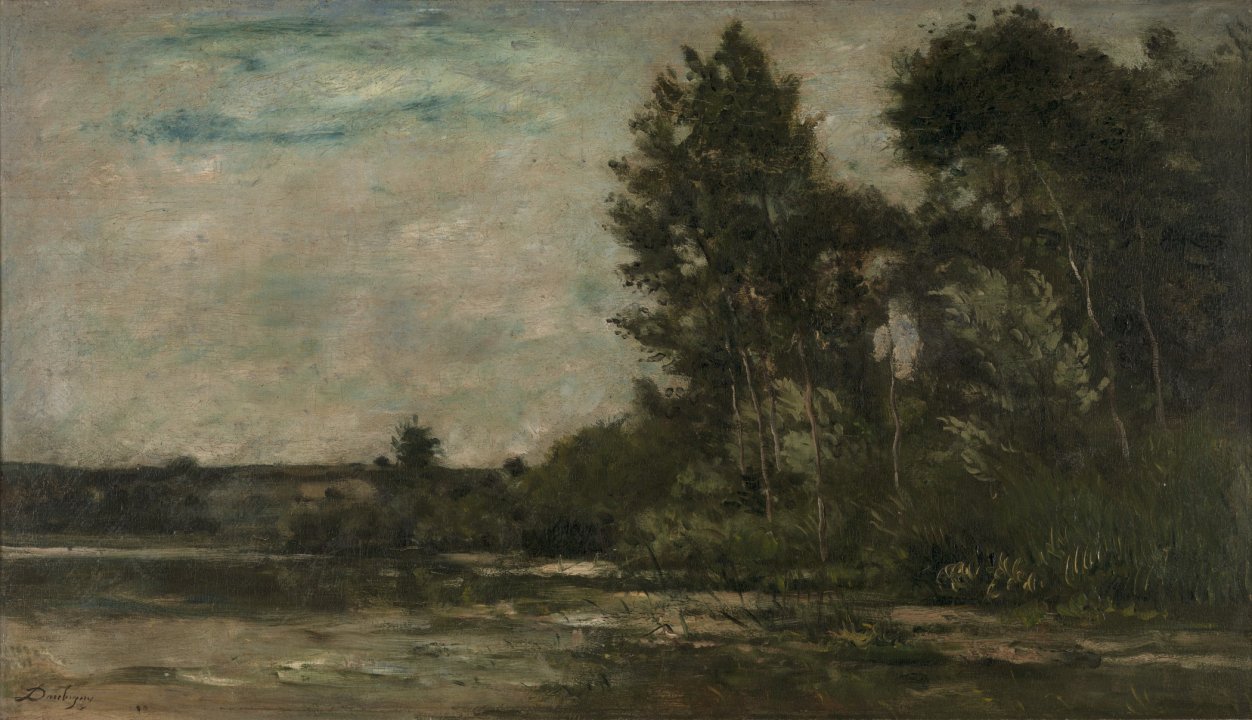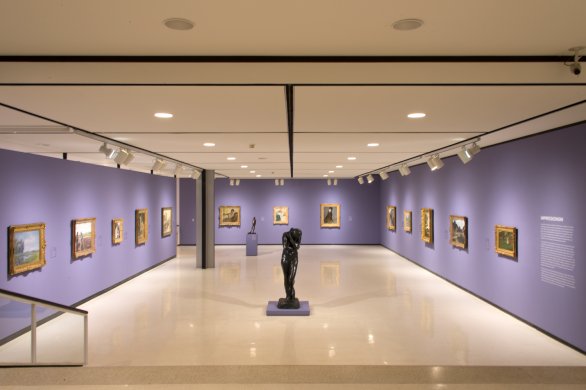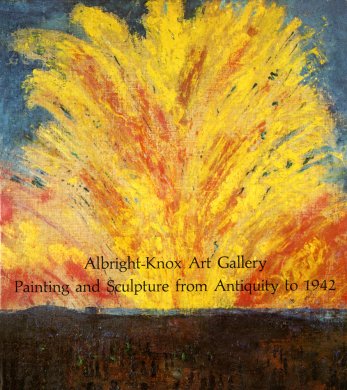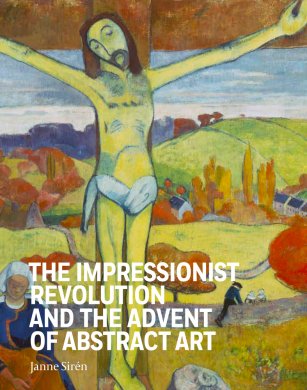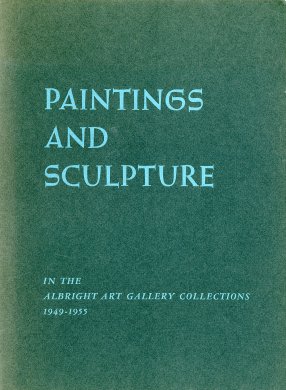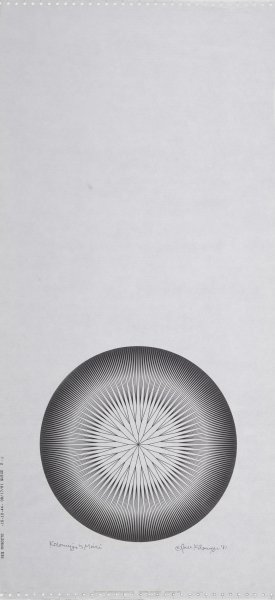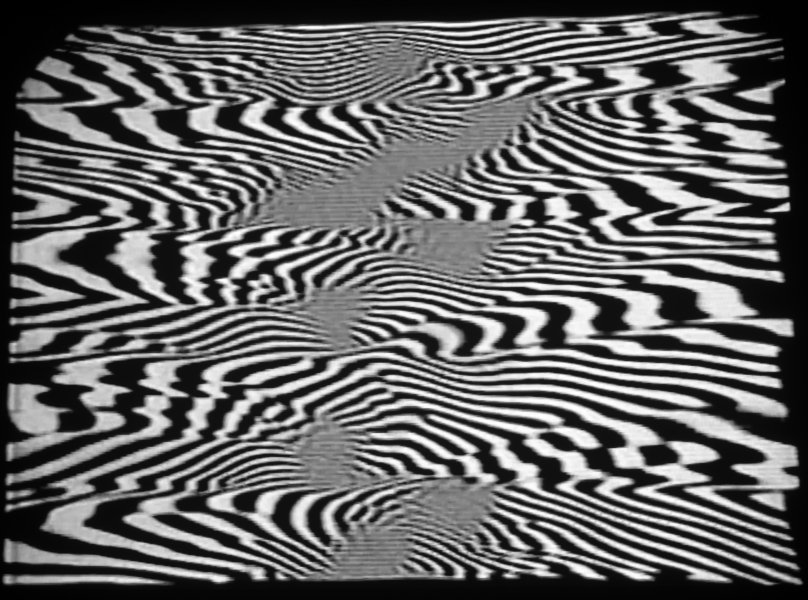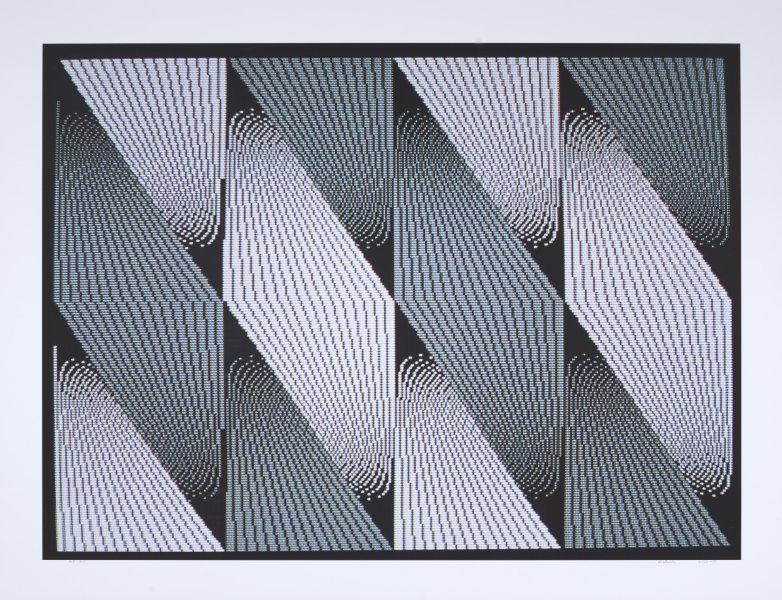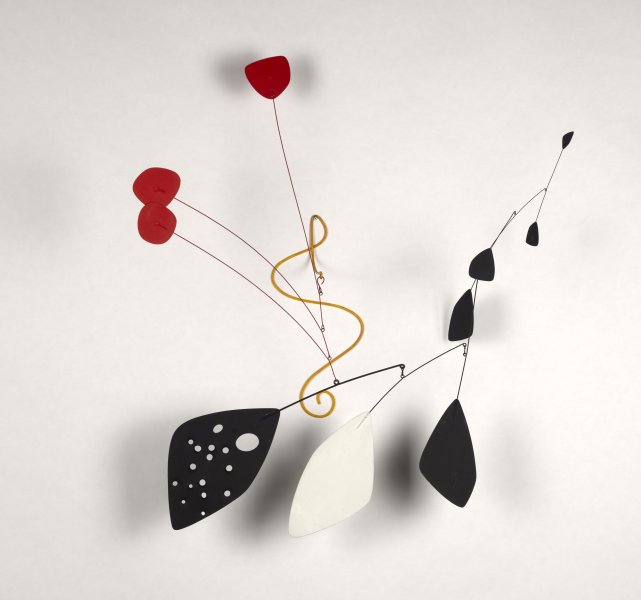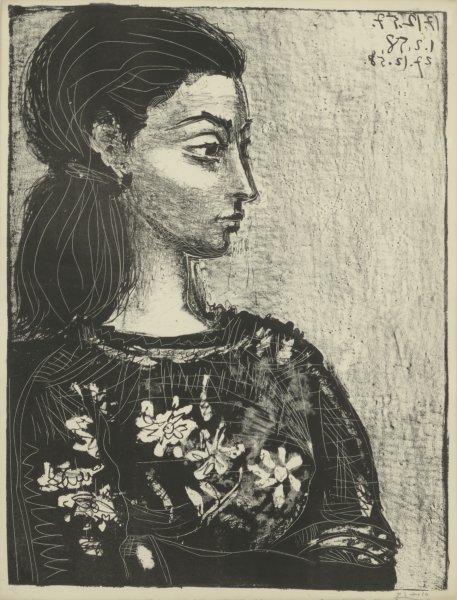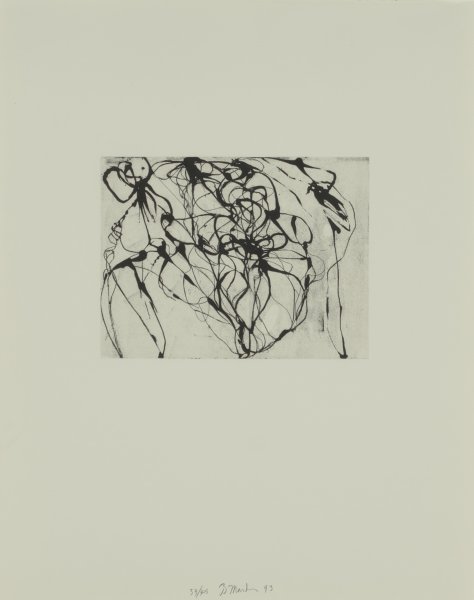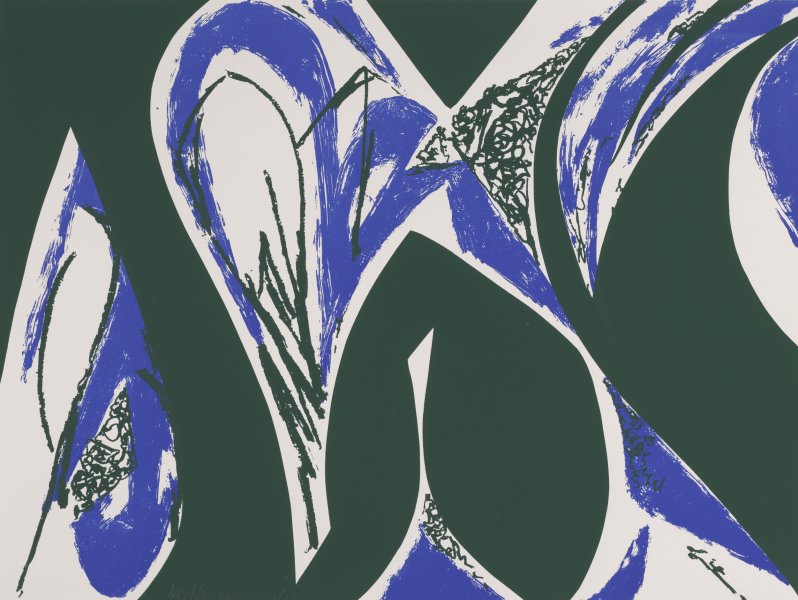Charles François Daubigny
French, 1817-1878
Scène de rivière (River Scene), ca. 1860-1870
Artwork Details
Currently on View
Materials
oil on wood
Measurements
support: 15 3/8 x 26 7/16 inches (39.05 x 67.15 cm)
Collection Buffalo AKG Art Museum
Credit
Bequest of Edmund Hayes, 1924
Accession ID
1924:20
In the 1850s and 1860s, prior to the establishment of Impressionism, Barbizon School painter Charles François Daubigny approached the landscape from a new perspective. He lived and worked on the rivers of northern France in his floating boathouse studio. Thus, surrounded by water, he established a vantage point from inside of his compositions. Daubigny’s emphasis on painting outdoors to observe changing weather conditions and light prefigures key interests of later Impressionist painters. He was a mentor and friend to Camille Pissarro and Claude Monet, whom he met in London in 1870. Despite his pivotal role in shaping the history of Impressionism, Daubigny was never widely celebrated as an artist during his time. The sketch-like works he submitted to the annual Salon were routinely assailed and dismissed by critics as “mere impressions.”
Label from Monet and the Impressionist Revolution, 1860–1910, November 15, 2015–March 20, 2016
